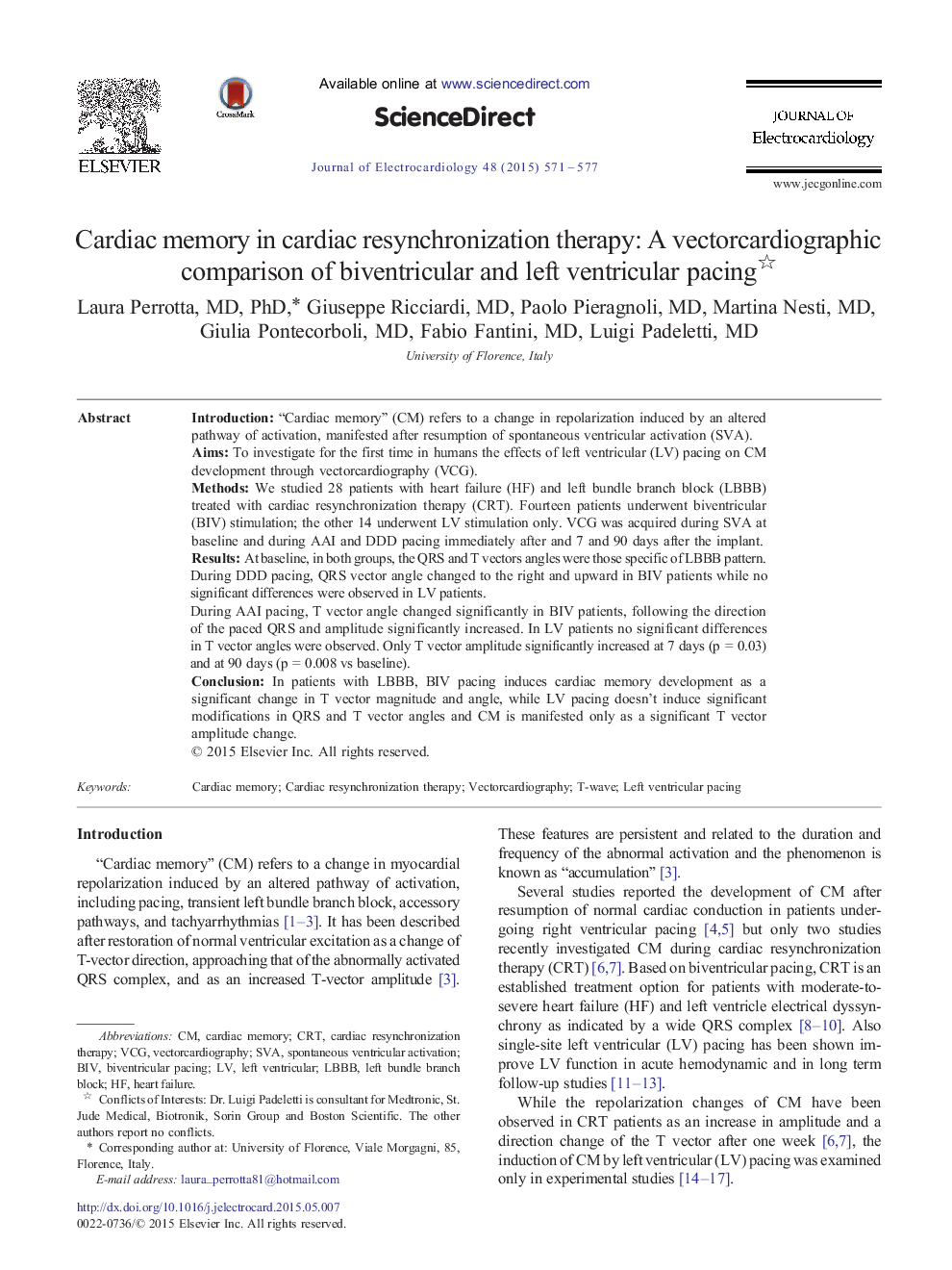| کد مقاله | کد نشریه | سال انتشار | مقاله انگلیسی | نسخه تمام متن |
|---|---|---|---|---|
| 5986265 | 1178842 | 2015 | 7 صفحه PDF | دانلود رایگان |
- Cardiac memory is an established electrical phenomenon following altered activation.
- It has been reported after resumption of normal conduction in pts undergoing RV pacing and CRT.
- We assessed for the first time CM after LV pacing in pts with HF and LBBB using VCG.
- Our results provide novel insights into electrical changes induced by pacing in vivo.
- CM in LV pacing resulted as increase of T vector magnitude, no direction change.
Introduction“Cardiac memory” (CM) refers to a change in repolarization induced by an altered pathway of activation, manifested after resumption of spontaneous ventricular activation (SVA).AimsTo investigate for the first time in humans the effects of left ventricular (LV) pacing on CM development through vectorcardiography (VCG).MethodsWe studied 28 patients with heart failure (HF) and left bundle branch block (LBBB) treated with cardiac resynchronization therapy (CRT). Fourteen patients underwent biventricular (BIV) stimulation; the other 14 underwent LV stimulation only. VCG was acquired during SVA at baseline and during AAI and DDD pacing immediately after and 7 and 90 days after the implant.ResultsAt baseline, in both groups, the QRS and T vectors angles were those specific of LBBB pattern.During DDD pacing, QRS vector angle changed to the right and upward in BIV patients while no significant differences were observed in LV patients.During AAI pacing, T vector angle changed significantly in BIV patients, following the direction of the paced QRS and amplitude significantly increased. In LV patients no significant differences in T vector angles were observed. Only T vector amplitude significantly increased at 7 days (p = 0.03) and at 90 days (p = 0.008 vs baseline).ConclusionIn patients with LBBB, BIV pacing induces cardiac memory development as a significant change in T vector magnitude and angle, while LV pacing doesn't induce significant modifications in QRS and T vector angles and CM is manifested only as a significant T vector amplitude change.
Journal: Journal of Electrocardiology - Volume 48, Issue 4, JulyâAugust 2015, Pages 571-577
